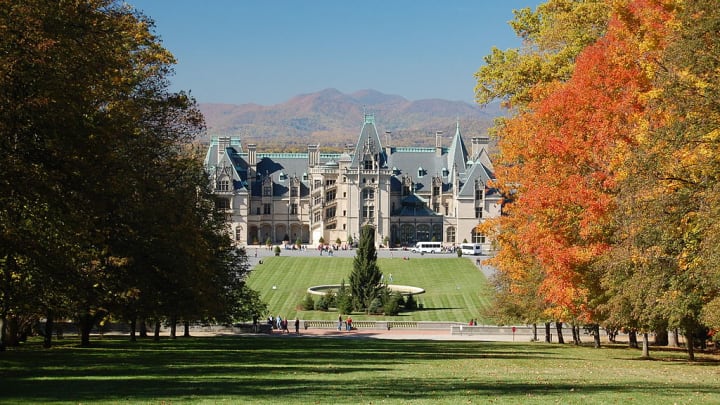Watch a Time-Lapse Video of the Changing Seasons at Biltmore Gardens
The gorgeous grounds of the Biltmore in Asheville, North Carolina, are awash in floral color throughout the year.

The changing seasons always make a splash at the historic Biltmore estate in Asheville, North Carolina. And while spring, summer, and fall are perfect times to explore the Biltmore’s 8000 acres of blooming gardens and historic buildings, the estate has plenty of beauty to offer all year round—including indoor gardens during winter. In the video below, you can see how the property transforms with the turn of the seasons.
Biltmore’s gardens include six formal and informal gardens, woodland and meadows, a conservatory, a farm, and aquatic features.
In spring, more than 200 orchids, 15,000 daffodils, and 74,000 tulips bloom at Biltmore Gardens, enlivening the grounds with bright pops of yellow, red, purple, and orange. The Azalea Garden bursts into bloom with pink, magenta, and lavender flowers, while flowering dogwoods, serviceberry, and redbuds paint the forest understory in white and pink. Roses, peonies, rhododendrons, sunflowers, and water lilies reveal their show-stopping blooms in summer while tropical plants like palms, plumeria, and hibiscus thrive in the conservatory’s climate-controlled environment.
Autumn marks a transition from jewel-tone blooms to the earthy scarlets, oranges, and golds of native trees and shrubs. Visitors can witness phenology in action as sourwoods, oaks, red and sugar maples, hickories and sweetgums unveil their fall looks. Winter brings plants indoors to the conservatory, where master gardeners set up displays of orchids, poinsettias, and tropical foliage during the colder months.
The gardens of Biltmore were the last professional project of Frederick Law Olmsted, who’s widely regarded as the founder of American landscape architecture. His other famous works include the U.S. Capitol grounds, the Arnold Arboretum in Boston, Manhattan’s Central Park, and many more gems.
If this time-lapse video has whetted your appetite for floral frolics—or you’re just due for some nature therapy—check the online bloom reports and website to plan a visit.
A version of this story was published in 2016; it has been updated for 2023.